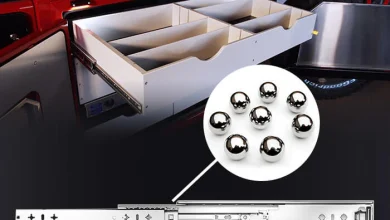
5 Essential Steps For Maintaining Reverse Osmosis Systems
Reverse Osmosis (RO) systems are a game changer when it comes to providing clean and pure water for your home or business. But like any sophisticated equipment, they require regular maintenance to keep them running flawlessly. Neglecting this crucial task can lead to many problems, from decreased water quality to high operating costs or even system failure.
However, maintaining your reverse osmosis system doesn’t have to be a challenging task. In fact, with a bit of know-how, you can keep your RO system humming along for years to come.
With that in mind, here are five essential tips for maintaining your reverse osmosis systems:
Clean Your Reverse Osmosis Membranes
Effective reverse osmosis membrane cleaning is crucial. How often you clean and the cleaning solutions you use will depend on the quality of your water supply and the types of contaminants present.
For example, if you live in an area with hard water, you might notice mineral build up on the RO membranes more quickly. In that case, using a high ph cleaning solution can help dissolve and remove those pesky mineral deposits.
On the other hand, if your water has a high organic content, you might see more biological fouling on the RO membranes. Low ph cleaning chemicals can come in handy in such a case, blasting away any accumulated organic gunk.
By alternating between these two types of RO membrane cleaning chemicals, you can ensure that your membranes stay squeaky clean and free from mineral scaling and biological growth. Cleaner RO membranes mean better raw water treatment and flow, higher quality output, and longer membrane life.
Conduct Regular Inspection Of Reverse Osmosis Membrane
Keeping your reverse osmosis system running requires regular inspections of the reverse osmosis systems. These crucial membrane elements can get clogged or damaged by contaminants in the water supply. Inspecting the osmosis membranes and conducting RO membrane cleaning from time to time will enable you to spot tears or build-ups that could reduce membrane life or slow down membrane performance.
For instance, if you have a reverse osmosis system installed under your kitchen sink, don’t clean the membrane surface only. Consider opening it every few months to visually inspect the membranes. If you notice discolouration, cracks, or crusty deposits, it’s a sign that the reverse osmosis membranes need attention.

Clean And Sanitize Associated Components
Maintaining a top-notch RO system isn’t just about the Ro membrane cleaning only; you must also take care of the other membrane elements. For instance, the feed water tank can accumulate sediment and bacteria that could make their way into your purified water with time. Giving it a good scrub-down can help keep that contamination at bay.
The same goes for the pressure vessels and pipes. Deposits can pile in these parts of your reverse osmosis system. This may slow down water flow and impact water quality.
But worry not! Keeping these membrane elements clean is a breeze. A simple sanitizing solution and a little elbow grease are often all you need to flush unwanted gunk and keep everything flowing smoothly.
Monitor Pressure Drops And Flow Rates
You must monitor the pressure and flow rate of your reverse osmosis system to stay ahead of potential issues. Think of it as checking the vital signs of your membrane system’s health.
If the water pressure on the output side of the system drops noticeably, it could be a sign that the RO membranes are starting to clog or scale, making it harder for the water to pass through. Similarly, a decrease in the flow rate of water coming out of the water purifier is a red flag. It may be an indication that something might be amiss.
On the flip side, if you spot an increase in the pressure drop across the reverse osmosis system, it’s often an indication that the RO membranes are facing some resistance, perhaps due to build-up or membrane fouling.
Monitoring these key indicators allows you to spot such problems early and act before they turn into more significant headaches. A quick cleaning or inspection could be all it takes to get your membrane system back in top shape.
Calibrate And Analyze Maintenace Activity
Calibration is a critical aspect of maintaining any precision-dependent system, including reverse osmosis systems. Just like a fitness tracker that needs to be accurate to ensure you get credit for every step you take, the sensors and gauges in a reverse osmosis water filtration system need to provide precise readings to ensure the system functions efficiently.
These gauges measure crucial parameters such as pressure, flow rate, and water quality. Over time, these instruments can drift from their accurate settings due to normal wear and tear or due to the influence of various environmental factors. If you don’t calibrate the regularly, the drift can lead to incorrect readings, which in turn could result in improper system operation.
Conclusion
Maintaining a reverse osmosis system is vital for ensuring a consistent supply of high-quality water and prolonging the overall membrane life of your investment. By incorporating the five basic steps outlined above, you can keep your RO system running smoothly and efficiently.
Remember, preventative maintenance is critical. Consistent upkeep protects you from potential headaches down the road and saves you money by avoiding costly repairs or premature membrane system replacements. Therefore, make reverse membrane osmosis maintenance a priority, and your RO system will continue to provide you with clean, pure water for years to come.




